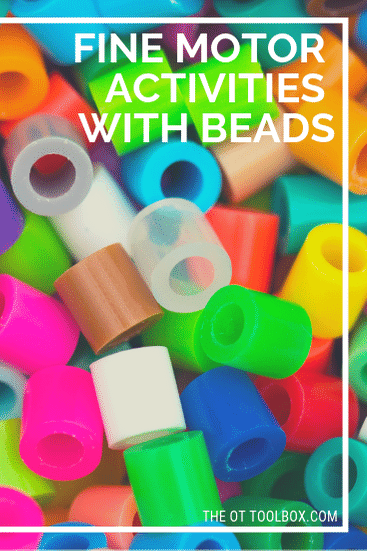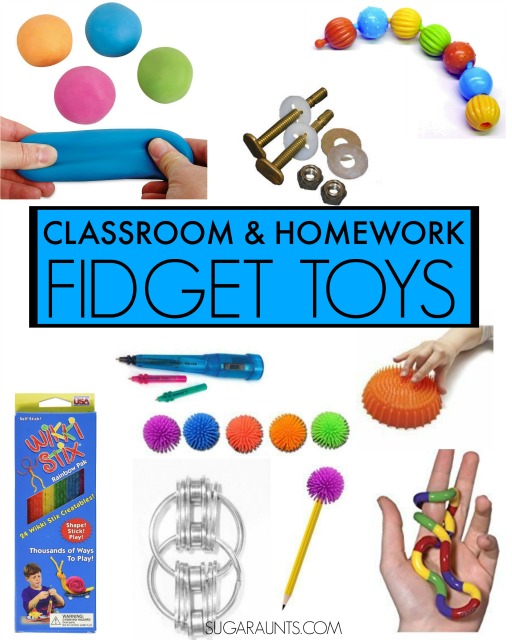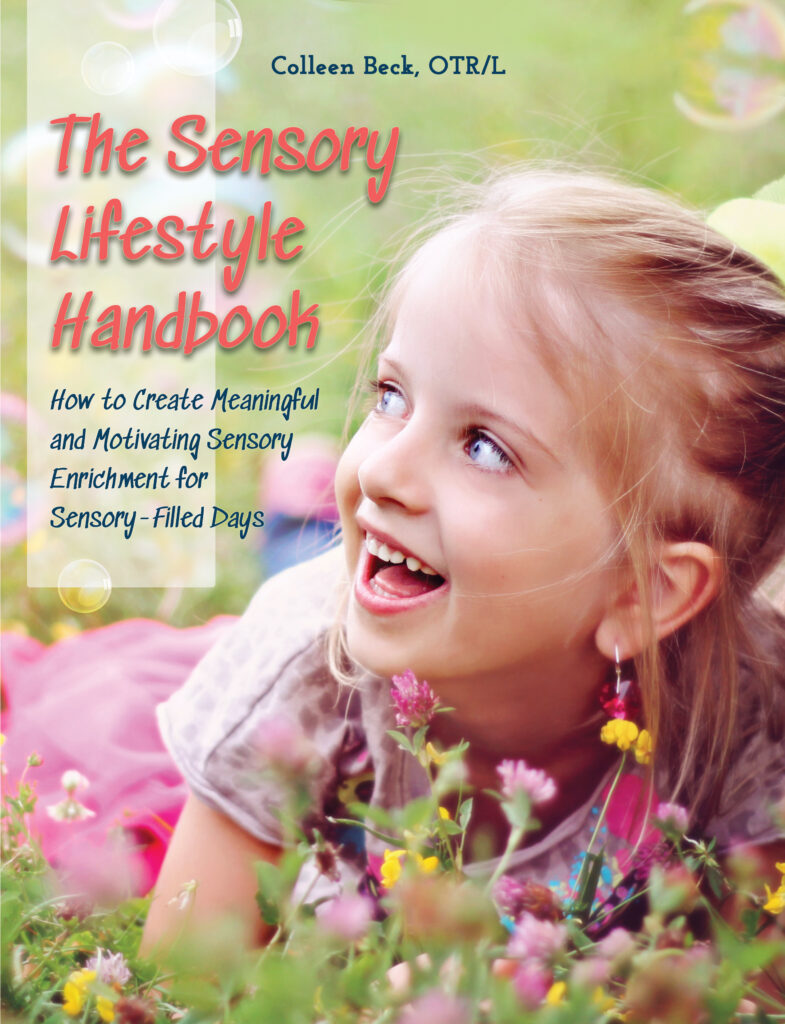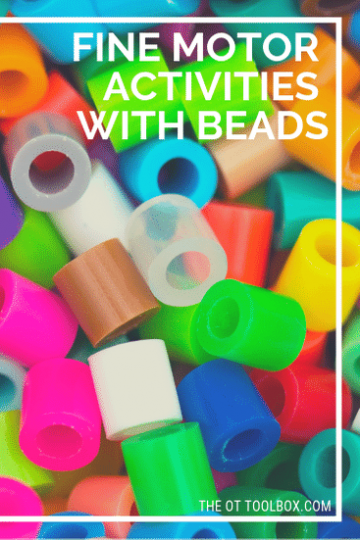These DIY fidget toys are homemade fidgets that kids can make. Use these fidget items to help kids pay attention and focus in the classroom or home. Add these ideas to your occupational therapy toys that support kids through play while targeting self-regulation skills.
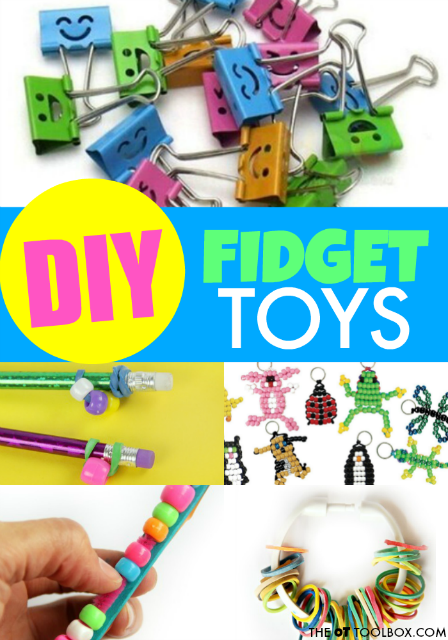
DIY Fidget Toys
Fidget toys are in the hands of many school-aged kids. Students without sensory or attention needs are playing with fidget toys on the playground, on the school bus, and in the classroom. You can find spinner fidgets, and so many other fidget toys in many stores and online, but what about the DIY version?
The thing about some store-bought fidget tools is that they are noisy and call attention to the user. Fidget toys have become more popular in recent years, allowing those that truly need them for meeting sensory and motor needs to be more mainstream.
In fact, using a few of these games with paper clips are good ways to fidget with the fingers using everyday materials.
However, that can be another issue when a student has a fidget tool in the classroom. It can draw attention to the student because other students see the itm as a toy rather than a tool to support learning.
Coming up with quiet fidget toys that help the child meet their sensory and movement needs without creating more noise or attention in the classroom can be tricky. Here are more ideas for quiet fidget toys for the classroom.
So what is the obsession with these fidget toys?
The fidgets are intended to provide kids with a means to occupy their hands so that they can focus during tasks that require attention. There are many children who need fidget tools in order to complete work. Most of us know the feeling: the urge to doodle when talking on the phone or the tendency to tap a foot during a lengthy work meeting.
Fidgeting is a tool that helps us to actually pay attention and focus on the task at hand in many situations. Fidgeting during homework or in the classroom is a common behavior.
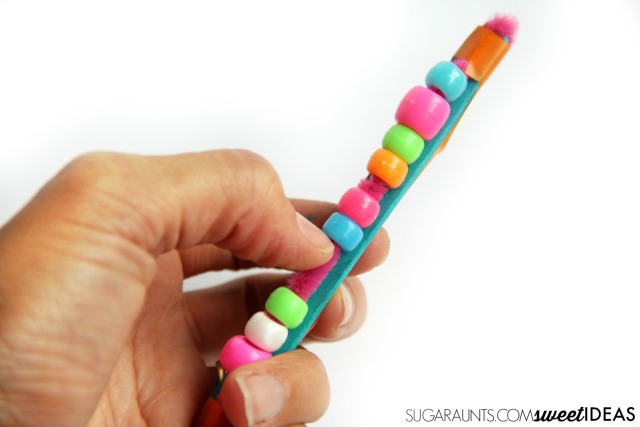
DIY Fidget Toys
Affiliate links are included here.
You have probably seen kids (and maybe your own kids) spinning these spinner fidget toys.
The fidgets that are in every school and classroom these days are beneficial to some students. For others, they are a cool new toy. For those that require a fidget tool to focus or attend, or have sensory needs requiring the hands and fingers to move, other fidget toys may work just as well.
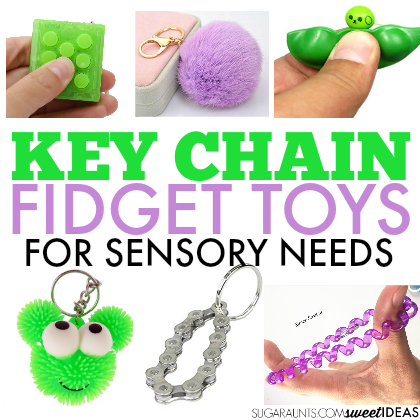
Fidgeting during work stimulates the brain, allowing a child to complete school work or homework.
Fidgeting is mindless play or touching fingers, pencils, hands…anything that allows a person to focus on the task at hand. Kids that are fidgeting are seeking calm, and focus so that their brain can complete a task.
The problem is when the brain’s urge to fidget distracts a child from school tasks. They might be so wiggly and moving that they just can not sit still and focus in a functional manner. Fidgeting can be managed with less distracting techniques which can allow the child to accomplish the homework, and move on to other things.
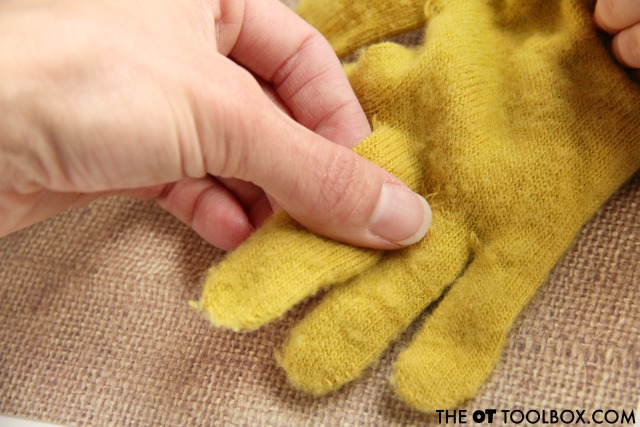
Homemade Fidget Toys for Kids
Here are a variety of DIY fidgets that can work for kids in the classroom or at home:
- A chain of paper clips. They make a great math tool, too!
- Pipe cleaners and beads- Attach them to pencils as a pencil topper fidget toy.
- Or, use pipe cleaners and beads to make a desk-top fidget tool
- Use one or more key chains linked together to make a DIY fidget tool. These keychain fidget toys are perfect.
- Fill balloons with a small amount of flour, play dough, dry beans, rice, or slime. Tie a knot and let kids play with the fidget tool.
- Use an old glove to make a weighted fidget toy.
- Attach a strip of sticky-back velcro inside or under a desk.
- Make a quiet fidget toy with small rubber bands and a shower curtain loop.
- A kneaded eraser work well in the classroom setting.
- Nuts and bolts work well during school or homework tasks.
- A slice of a pool noodle makes a great hand squeeze tool.
- Bead keychain crafts are an awesome fine motor activity and the end result is a fidget tool that can be used every day!
- Bubble wrap
- Attach a binder clip to a pencil. How cute are these fun face binder clips?
- Pipe cleaners wrapped in a loose ball.
- Make a paper fidget toy that doubles as a fine motor workout! These paper flextangles are too cool!
How to Make Fidget Toys
Getting kids involved with making homemade fidget toys is part of the fun. There are fine motor benfits involved in this process, too.
- First, select the type of DIY fidget you would like to use to meet specific needs.
- Next, select materials. You may need pipe cleaners, beads, balloons, or nuts and bots.
- Prepare a work space. Set out the materails on a table or desk.
- Students can select the materials they would like to use.
- Create a fidget tool using the materials.
The nice thing about fidgets is that with the growth of YouTube as a resource, there are many videos on how to make fidget toys out there. Use one of those available videos as your inspiration, or use the materials you have on hand.
If one thing is for certain, it is possible to make a DIY fidget toy using anything!
What are your favorite DIY fidget toys? Do you have any favorite tools that work for your child, student, or client?
fidget tool or a fidget toy?
Here is your disclaimer on the wording of this blog post…
The term fidget toy is very well known these days, with the popularity of spinner fidgets. However, there is a distinction between a fidget toy and a fidget tool. When there is a therapeutic need for a product, it is a tool. A therapy tool is one that helps meet goals, results in independence through intervention. Something that looks like a toy can be a tool for the child with sensory needs, fine motor challenges, attention difficulties, or any other problem areas.
Fidget tools are those that help kids cope, meet sensory needs, and get the input they need so they can focus, pay attention, and move. In this blog post, I am using these terms interchangeably, for best search results. In other words, people complete a Google search for fidget toy, not a fidget tool, and I want this information to be found on Google so that the kids who need a fidget tool are well-served!
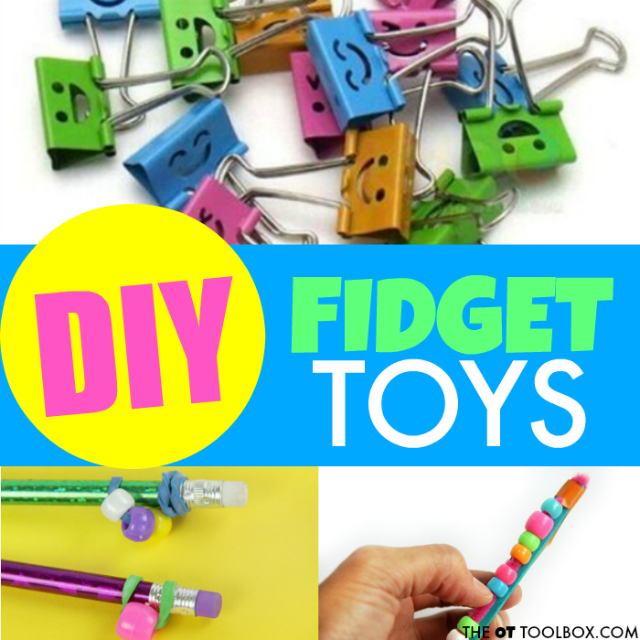
Need to add DIY fidget toys to a sensory diet? Wondering how to integrate a sensory diet into everyday tasks? A sensory lifestyle may be more of what you are looking for! DIY fidget toys fit right into a sensory lifestyle with ease and flexibility.
Read all about how to create a sensory lifestyle here:
The Sensory Lifestyle Handbook walks you through sensory processing information, each step of creating a meaningful and motivating sensory diet, that is guided by the individual’s personal interests and preferences.
The Sensory Lifestyle Handbook is not just about creating a sensory diet to meet sensory processing needs. This handbook is your key to creating an active and thriving lifestyle based on a deep understanding of sensory processing.

Colleen Beck, OTR/L has been an occupational therapist since 2000, working in school-based, hand therapy, outpatient peds, EI, and SNF. Colleen created The OT Toolbox to inspire therapists, teachers, and parents with easy and fun tools to help children thrive. Read her story about going from an OT making $3/hour (after paying for kids’ childcare) to a full-time OT resource creator for millions of readers. Want to collaborate? Send an email to contact@theottoolbox.com.

